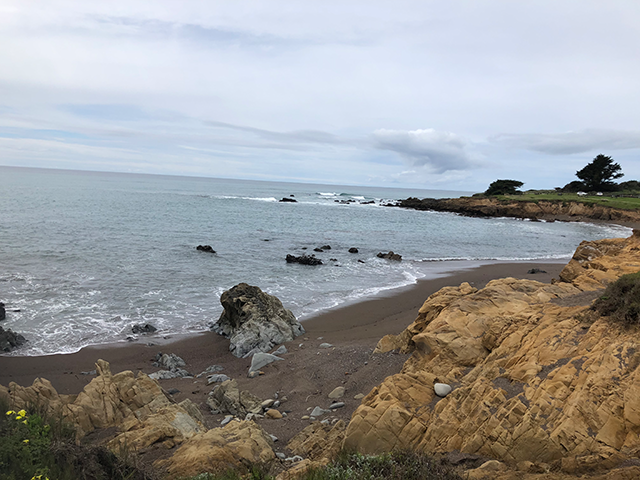Luke 9:28-36 - The Transfiguration of the Lord
Luke 9:28) Now about eight days after these sayings, Jesus took with him Peter and John and James, and went up on the mountain to pray. 29) And while he was praying, the appearance of his face changed, and his clothes became dazzling white. 30) Suddenly they saw two men, Moses and Elijah, talking to him. 31) They appeared in glory and were speaking of his departure, which he was about to accomplish at Jerusalem. 32) Now Peter and his companions were weighed down with sleep; but since they had stayed awake, they saw his glory and the two men who stood with him. 33) Just as they were leaving him, Peter said to Jesus, “Master, it is good for us to be here; let us make three dwellings, one for you, one for Moses, and one for Elijah”—not knowing what he said. 34) While he was saying this, a cloud came and overshadowed them; and they were terrified by the cloud. 35) Then from the cloud came a voice that said, “This is my Son, my Chosen; listen to him!” 36) When the voice had spoken, Jesus was found alone. And they kept silent and, in those days, told no one any of the things they had seen.
Background to the Passage: This passage takes place immediately after Peter has declared that Jesus is the Messiah of God in response to Jesus asking his disciples, “Who do you say that I am?” After Peter’s confession, Jesus tells his disciples, “If any want to become my followers, let them deny themselves, take up their cross daily and follow me.” Eight days after this prediction of his own suffering and the suffering of those who will be his followers, Jesus takes the inner circle of three disciples: Peter, James, and John up on to a mountain to pray. There they witness the transfiguration of Jesus. The word simply means ‘big physical change’. This passage clarifies the nature of Jesus’ Messiahship and reveals the disciples’ lack of understanding. Scholars have long debated the Transfiguration story. Does it report a mysterious event during the ministry of Jesus? Is it a post-resurrection appearance of Jesus that has been placed back in the ministry by later editors? Regardless of how this story found its way into our holy texts, all agree that it is a powerful story that teaches us about Jesus’ identity—especially his divine Sonship—and foreshadows his exaltation to heaven, and continues the training of his discipleships.
The role of Peter, James, and John: In both Luke and Mark these three disciples have a very special role. They witness the ‘secret epiphanies’ of Jesus such as the raising of Jairus’ daughter, the transfiguration, and the time of prayer in the Garden of Gethsemane. When we see these three, we can be aware that something of real spiritual importance is about to take place.
Word Study
Vs. 28 – went up the mountain – the location of the mountain is not given in any of the Gospels. Since the time of Origen (one of the early church teachers) it has been identified as Mt. Tabor, near Nazareth. There is no way to know this for certain. Remember that special in-breakings of God’s divine presence and glory often happen on mountains in the Bible.
Vs. 29 – and while he was praying – Just as the voice from heaven at Jesus’ baptism happened while Jesus was praying, so now the transfiguration and the voice occur in the midst of prayer. Luke clearly understands that prayer has the power to open us up to the intense and untamable presence of God.
The appearance of his face changed, and his clothes become dazzling white: -Again, special experiences of God are usually accompanied by a great, dazzling light. This is a sign of God’s glory and presence. Jesus’ appearance confirms his presence with God and is a further disclosure of his divinity.
Vs. 30 – Moses and Elijah – These two men carried powerful memories. Primarily, Moses represents the Law and Elijah the great prophets of Israel. These are the two key elements of Jewish scripture at the time of Jesus. They were the two authorities of Jewish life and faith.
Vs. 31 – they were speaking of his departure – Literally, they were speaking of his ‘exodus’. The power of the Exodus experience cannot be overestimated in Jewish thought. God was the one who freed God’s people from bondage. The movement from slavery in Egypt was the formative experience of God’s freeing nature. Now, Jesus’ future, his journey to Jerusalem and the cross, is set in the language of God freeing the people. What was begun in the exodus will be completed in the cross.
Vs. 32 – Now Peter and his companions were weighed down with sleep – Bless their hearts, they are exhausted. The disciples are often shown as sleepy when watchfulness is called for. This was one way of the biblical writers saying that they were slow to respond and understand the deep truths of Jesus.
They saw his glory – The references to ‘glory’ are not part of Mark’s account. Luke adds them to call to mind to his post resurrection readers both Jesus’ resurrection and second coming.
Vs. 33 – let us make three dwellings – lit. ‘tents. Peter wants to freeze this moment and stay there forever. He also misses this clarifying of Jesus’ identity by offering to make these tents as if Jesus, Moses, and Elijah were equals.
Vs. 34 – a cloud came and overshadowed them – Clouds were often a part of special mystical experience in the Old Testament. Clouds both signal God’s presence and make clear that that presence can never be completely comprehended.
Questions for Reflection:
1. Have you ever had a ‘mountaintop’ experience in your faith journey? What was your response to this experience? Did you wish you could keep the ‘high’ feeling in your daily faith journey?
2. How do you understand the role of Jesus as Messiah?
3. How do the glory of Jesus and the suffering of Jesus fit together?
4. How do you define faithful discipleship to Christ?



